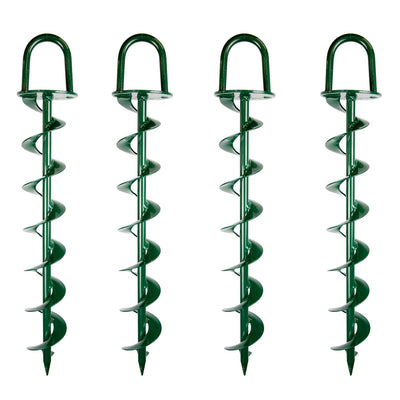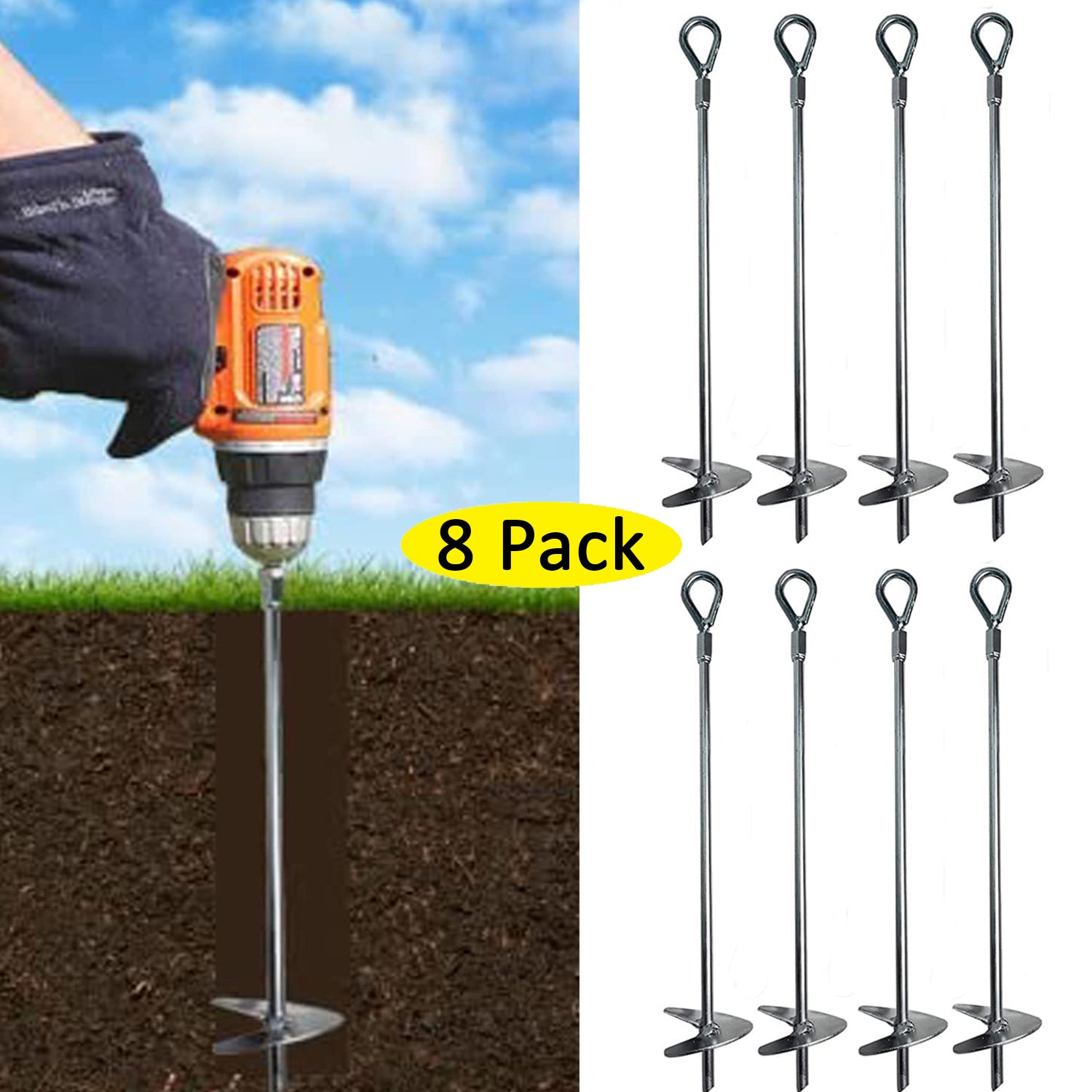The Role of a Ground Anchor in Enhancing Security
The Role of a Ground Anchor in Enhancing Security
Blog Article
Discover the Various Kinds of Ground Support for Your Next Project
From auger supports, which excel in varied soil conditions, to risk supports developed for momentary setups, the alternatives are numerous. Furthermore, concrete and screw supports present unique benefits in specific situations, while deadman anchors are customized for applications needing resistance to side pressures.

Auger Anchors
Auger supports are a popular option in various building and landscape design tasks due to their special design and effective securing abilities. These supports are composed of a helical screw-like shaft that is driven into the ground, permitting a steady and protected hold. The spiral style facilitates simple setup and maximizes resistance against lateral forces, making auger supports specifically effective in applications such as fence, momentary structures, and disintegration control.
The installment process of auger anchors is reasonably straightforward. Auger anchors can be conveniently removed and recycled, which includes to their cost-effectiveness and sustainability.
Among the significant benefits of auger supports is their capacity to distribute loads uniformly throughout the surrounding dirt, decreasing the risk of dirt disturbance and reducing ecological influence. Furthermore, they are much less vulnerable to loosening up or heaving over time compared to typical securing methods. Subsequently, auger supports are an outstanding selection for projects requiring sturdy and reliable anchoring remedies.

Risk Anchors
When it pertains to safeguarding structures in a selection of outdoor applications, risk supports supply a dependable and simple remedy. These anchors are typically built from sturdy products such as steel or aluminum, created to hold up against ecological stress and anxieties while giving optimum security. Their simple layout permits for quick installation, making them a suitable selection for long-term or momentary anchoring requirements.
Risk anchors are especially helpful in securing tents, canopies, and various other light-weight structures versus wind and weather. They work by being driven into the ground at an angle, creating a strong hold that resists pull-out forces - Ground Anchor. The effectiveness of stake anchors depends upon numerous elements, including dirt kind, dampness web content, and the angle of setup
For included security, lots of stake anchors feature accessory factors for bands or ropes, permitting tension adjustments as required. In applications such as landscape design or building, they can properly maintain devices or frameworks on uneven terrain. Generally, risk anchors provide a cost-effective and functional remedy for securing various outside installations, making them a preferred choice for specialists and DIY enthusiasts alike.
Concrete Anchors
Concrete supports provide a robust solution for safeguarding structures to concrete surface areas, guaranteeing stability and safety in numerous applications. These anchors are vital for jobs varying from property buildings to massive commercial setups. They come in various kinds, including development anchors, adhesive anchors, and undercut supports, each developed for details tons demands and ecological conditions.
Growth anchors depend on mechanical systems to grip the concrete when mounted. They are ideal for medium to durable applications. Glue supports use high-strength epoxy or resin to bond the support to the concrete, providing exceptional load-bearing capabilities, specifically in broken concrete circumstances. Undercut anchors develop a special form within the concrete, giving remarkable holding power, especially in applications where tensile lots are prevalent.
When performed correctly, concrete anchors considerably boost the architectural integrity of different jobs, making them important in contemporary building practices. Recognizing the particular demands of your task will aid in picking the appropriate type of concrete anchor for the task.
Screw Anchors

Screw anchors are a flexible attaching option that can be efficiently utilized in a selection of applications where traditional concrete anchors may not be enough. These anchors contain a helical style that allows them to be conveniently driven right into the ground, making them optimal for usage in dirt and other link substrates. Their unique structure offers superb holding power and resistance to pull-out pressures, making them suitable for various tasks, from landscaping to architectural support.
One of the main advantages of screw supports is their convenience of setup. They call for marginal equipment and can typically be installed without the demand for excavation, which saves both time and labor prices. Additionally, screw supports can be gotten rid of and reused, offering a lasting solution for momentary applications.
Screw anchors are especially beneficial in areas where soil problems are testing, such as loose or sandy dirts. Their capacity to be set up at differing midsts enables personalization based on certain task needs. In general, screw anchors supply a efficient and reputable securing method, making them an exceptional selection for engineers and specialists seeking efficient remedies for their projects.
Deadman Anchors
Deadman anchors serve as a robust solution for maintaining frameworks in tough conditions, specifically where traditional anchoring approaches might fail. These supports consist of large, hefty items buried underground, which create resistance versus lateral forces. The design normally includes a horizontal component, such as a block of concrete or a steel plate, hidden in the dirt, to which wires or straps are affixed.
The efficiency of deadman anchors depends use this link on their capacity to distribute loads over a bigger location, reducing the threat of failing in unstable soil problems. They are particularly helpful in applications such as maintaining walls, short-lived structures, and slope stablizing, where dirt motion can compromise the stability of the framework.
Installation of deadman supports needs careful planning to guarantee they are positioned at the right depth and orientation, optimizing their load-bearing ability. While they might need more labor and material than light-weight anchors, their reliability in adverse conditions makes them indispensable for long-lasting jobs. Deadman supports are flexible and can be adapted to numerous applications, making them a best choice for engineers dealing with special difficulties in their jobs.
Final Thought
In summary, selecting the proper kind of ground anchor is vital for making sure security and protection in see this site different projects. Auger anchors master varied soil conditions, while risk supports fit short-term applications. For concrete surface areas, growth and sticky supports supply trustworthy options, and screw supports supply adaptability in challenging surfaces. Deadman anchors are specifically effective in standing up to lateral pressures for retaining walls. Mindful factor to consider of these choices will boost project outcomes and architectural integrity.
In addition, concrete and screw anchors present one-of-a-kind benefits in specific situations, while deadman supports are customized for applications needing resistance to side forces - Ground Anchor.Auger anchors are a prominent selection in various construction and landscape design tasks due to their distinct design and effective anchoring abilities. They come in different kinds, consisting of growth supports, sticky anchors, and undercut supports, each made for specific tons needs and ecological problems
Adhesive supports utilize high-strength epoxy or resin to bond the support to the concrete, using premium load-bearing abilities, particularly in fractured concrete scenarios. Overall, screw anchors provide a trusted and reliable securing method, making them an excellent choice for designers and specialists seeking reliable options for their tasks.
Report this page